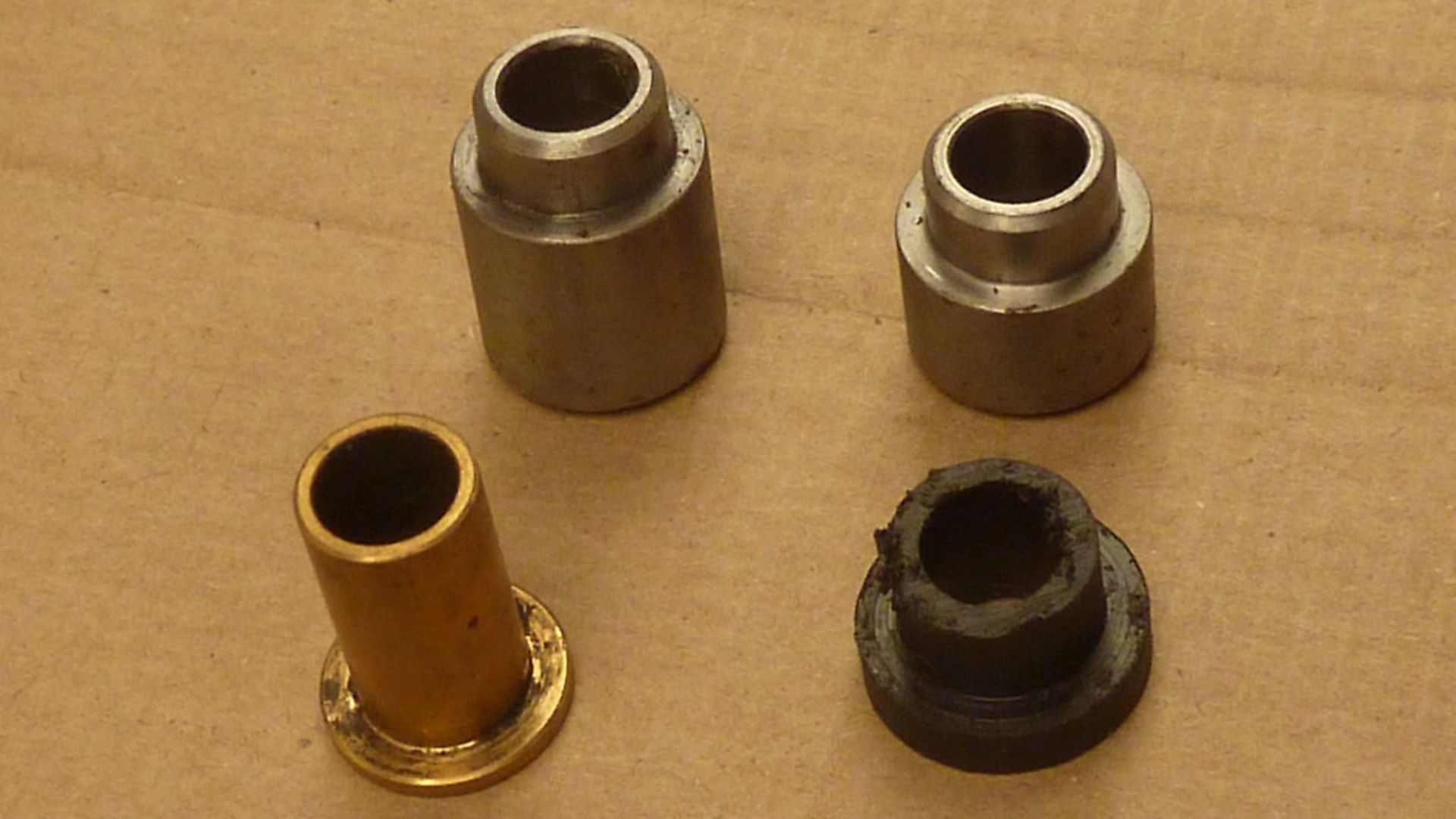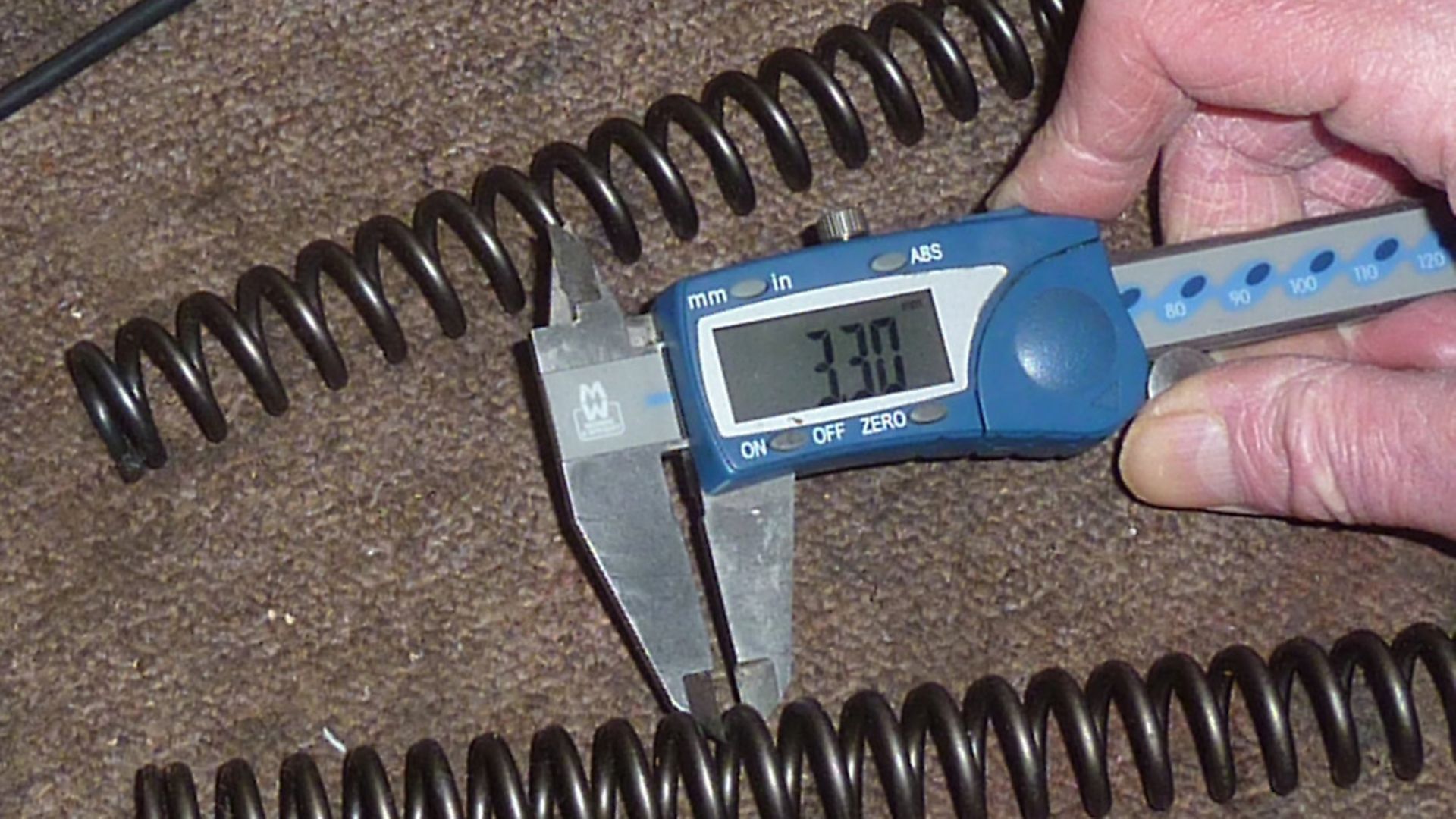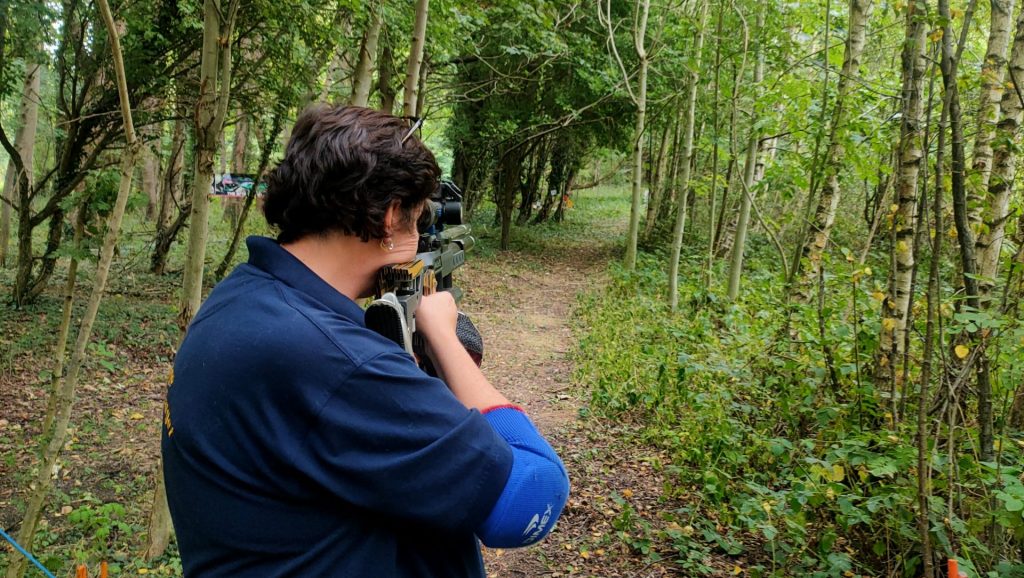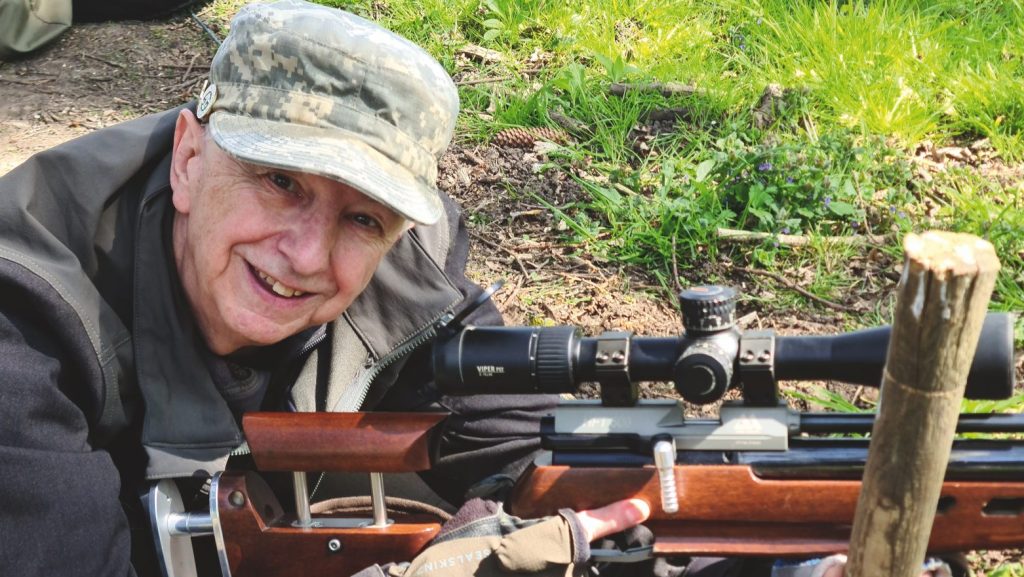TECHNICAL AIRGUN: RECOIL ACCELLERATION

Jim now turns his attention to the factors that determine recoil acceleration
Last month, I looked at the effect on hold sensitivity of recoil displacement (travel), of recoil kinetic energy, and of recoil acceleration, and concluded that, of the three, it was probably the recoil acceleration that had the greatest effect, so it seemed a good idea to examine which of the components of the springer determine recoil acceleration.
It’s very simple. Acceleration depends on the force placed on the piston at the point of release, which could be the most damaging part of the acceleration, and throughout the compression stroke, and the amount of resistance, which in turn depends on the mass (weight) of the piston, and friction, notably between the piston seal and the cylinder wall. The key components that determine recoil acceleration are thus the mainspring, the piston and the piston seal. Let’s consider each in turn.
MAINSPRING
In simple terms, for a given level of energy made available by the spring to the piston, the stiffer the spring, the greater the force placed on the piston at the point of release, the fiercer the acceleration. This means that a soft spring with a lot of preload will give slower acceleration than a stiffer spring with less preload, for equivalent piston energy.
To give an example: My TX200 has an 85mm stroke and is fitted with a standard TX200 Mk.3 mainspring with 41mm of preload. When making 27.5 ft.lbs. available to the piston for a muzzle energy of 11.4 ft.lbs., the piston release is 149 lbf (pounds of force). A popular aftermarket spring delivering the same energy level to the piston would have a piston release force of 170 lbf. Admittedly, the 21 lbf difference is not huge, but the much lesser preload with the stiffer spring reduces energy efficiency by offering less force to counter piston bounce, so that greater spring force would be needed for equivalent muzzle energy, and the spring in question is far from the stiffest that people are fitting in the TX200, and piston release forces approaching or exceeding 200 lbf are by no means uncommon.
LIMITING VELOCITY
The spring can only accelerate the piston to a certain velocity, and it’s not just friction and piston mass that causes this. Mike Wright introduced the concept of spring limiting velocity in his excellent articles published in Airgun World, and this is worthy of a second look. Every spring effectively has a velocity limit that cannot be exceeded, regardless of how stiff (how ‘powerful’, if you like) the spring is. The spring limiting velocity is essentially an internal ‘sound barrier’ related to the speed at which a strain wave can travel the length of the wire, and it cannot be exceed, no matter how beefy the spring is.
A typical airgun mainspring limiting velocity is in the order of 35 M/s (Metres per second), or about 114 fps, though that relates to a spring that’s not driving the mass of a piston, nor fighting the friction of the piston seal. While there are formulas to calculate the limiting velocity of a spring driving a piston mass, there are none that also take into account the friction between the piston seal and the cylinder wall, which can vary hugely according to the type of seal. Calculated limited velocities are, thus, to be taken as theoretical, rather than what will happen in the real world.
RATIO
Over and above the spring limiting velocity, the piston/spring limiting velocity varies according to the ratio of the masses of the piston and spring. For instance, my TX200 piston weighs 220 grams, the spring 78 grams, so the ratio is 220/78, or 2.82:1, add on the extra 28 grams of the standard TX200 Mk.3 piston weight, and the ratio becomes 248/78, or 3.17:1. The higher the ratio, the lower the limiting velocity so, as you’d expect, adding weight to the piston lowers absolute piston velocity, and vice versa, which is how it works out in the real world.
HOLD SENSITIVITY
With regard to piston (and hence recoil) initial acceleration, the limiting velocity, the piston mass, and the friction between the piston seal and cylinder wall all play a smaller part than the spring force on the piston at the point of release, although the piston seal friction can greatly limit velocity in the later stages of the compression stroke.
As an aside, Mike’s work on spring/piston limiting velocities explains one of the great mysteries of the spring airgun; namely, why fitting a beefier spring does not increase piston maximum velocity nor necessarily raise muzzle energy, but because it increases initial piston and hence recoil acceleration, it feels as though it does and at one time, some people believed this to be a good thing.
BACK IN THE DAY
In the days before affordable chronoscopes became widely available, many people based their impression of an airgun’s ‘power’ by the severity of the recoil, which was the initial acceleration, and the guaranteed method of increasing the severity of the recoil was to fit a ‘powerful’ spring – that it made the rifle hopelessly hold sensitive seemed lost on many. The far superior pellets we have today, plus the fact that PCPs show what level of almost effortless accuracy is possible in the almost complete absence of recoil, means that we springer shooters are far more aware of hold sensitivity.
In short, the use of very stiff springs seems to increase hold sensitivity.
PISTON
As already described, the mass of a piston has a direct bearing on its acceleration, so we might be forgiven in thinking that increasing piston mass would be a good way to slow piston acceleration, but things are rarely so simple. The recoil travel is a function of the piston travel, plus the mass of the rifle and that of the piston, and increasing piston mass increases recoil travel.
Therefore, although increasing piston mass undeniably reduces initial recoil acceleration, it does so at the cost of greater recoil travel and, convinced as I am that initial recoil acceleration is the main cause of hold sensitivity, reducing it at the cost of greater recoil travel will probably have little if any effect on hold sensitivity.
PISTON SEAL
There are two distinct types of piston seal friction, which are static friction (Fs) and kinetic friction (Fk). Static friction is easily measurable, in fact, many people have experimented by placing the cylinder and piston from a sliding cylinder airgun (such as the HW97, TX200 and Walther LGU) upright, with the piston in the position it would be at the start of the stroke, then placing increasing weight on the piston to find the force needed to get it moving. This is a good way to test whether the static friction of a seal varies with temperature, but not of much use if you want to know the very dynamic sliding friction that affects recoil acceleration.
Most piston seals these days are moulded from soft plastic materials, with a lip at the periphery to do the job of sealing against the cylinder wall, and most if not all protrude in front of the piston, providing a buffer to cushion the piston’s eventual landing. The static friction of new seals can be quite high, but the kinetic friction when they start to move is low in comparison. The kinetic friction does, nonetheless, help to tame the initial recoil acceleration.
SEAL OF APPROVAL
Kinetic friction varies according to the pressure between the bearing surfaces, the piston seal and cylinder wall, so a seal that is a tight fit will give lower initial recoil acceleration, but there’s a problem, which is that the materials from which seals are made expand and shrink with changes in temperature more than the steel of the cylinder, so they can become extremely tight in hot weather, and shrink to the point at which they no longer seal in extreme cold. One way to minimise the seasonal risks is to size the seal in very cold weather so that it seals, but is an easy fit – that way, it hopefully won’t become too tight in hot weather.
KINETIC FRICTION
Over and above temperature issues, the kinetic friction is far from constant, but rises in line with cylinder pressure, and that’s a lot. As the cylinder air pressure rises throughout the compression stroke, it bears against the piston seal’s front face, so the seal pushes harder against the cylinder wall, increasing friction. Friction is quantified by the force needed to overcome it, in this case, the Newton, equivalent to 0.224809 lbf. (pounds of force), and throughout the compression stroke, the initial single figure Newton friction rises to hundreds of Newtons.
THREE FACTORS
So, the accelerating piston is slowed not only by spring limiting velocity, but by rising air pressure, and rising friction, and it is only at the start of the stroke that acceleration is at its maximum, and that, I believe, is the bit that determines to a large extent the hold sensitivity.
In an effort to avoid temperature related piston seal issues, some people machine pistons to accept o rings as seals, which certainly avoids temperature problems, but at a cost, which is that ‘O’ rings offer very little in the way of friction to counter initial recoil acceleration, which is as a result high. It may be coincidence, but two or the three most hold sensitive modified rifles I have tested used ‘O’ rings as piston seals, and the reason it may be coincidence is that ‘O’ rings weren’t the only thing they had in common; they both had very lightweight pistons, so the problem could easily have been due to a combination of light piston and ‘O’ ring.
FEEL
One huge problem with hold sensitivity is that some of the rifles with the greatest hold sensitivity have very short recoil travel and to people shooting them, feel as though they will not be hold sensitive. A round of HFT often proves otherwise.
Of the 30 targets on a UKAHFT course, 24 are usually shot prone because it’s the easiest of the three positions (kneeling and standing are also used) from which to achieve accuracy. If the club ground is anything like that at Nomads HFT, the ground around the pegs is rarely level, so the shooter’s elbows are rarely level, which minutely affects rifle hold, and that’s enough to destroy anyone with less than perfect technique shooting a very hold sensitive springer.
LESSON LEARNED?
Perhaps we might draw lessons from last year’s UKAHFT National Recoil Championship, in which the top three were using TX200 Mk.3s, all with medium (85mm) piston stroke, all with medium (220g) pistons, and all with soft TX200 Mk.3 main springs with 41mm of preload, and all with gentle recoil acceleration. Whether or not the reason for the success of these rifles against much more highly modified examples is due to hold sensitivity is by no means proven, but the evidence is difficult to ignore.
CONCLUSION
Recoil acceleration to a large extent determines how ‘quick’ a rifle feels, perhaps more so than how ‘quick’ the shot cycle actually is, but it may be partially or wholly connected to hold sensitivity, something to bear in mind if you’re contemplating replacing a manufacturer’s mainspring with a stiffer aftermarket alternative, shaving weight from the piston or switching to a low-friction piston sealing solution.












